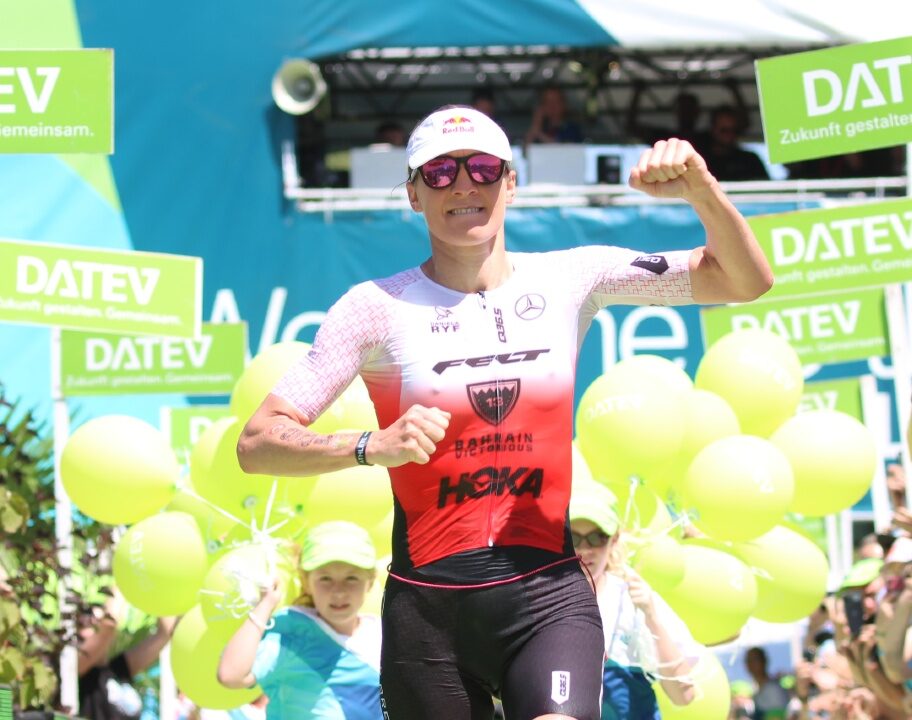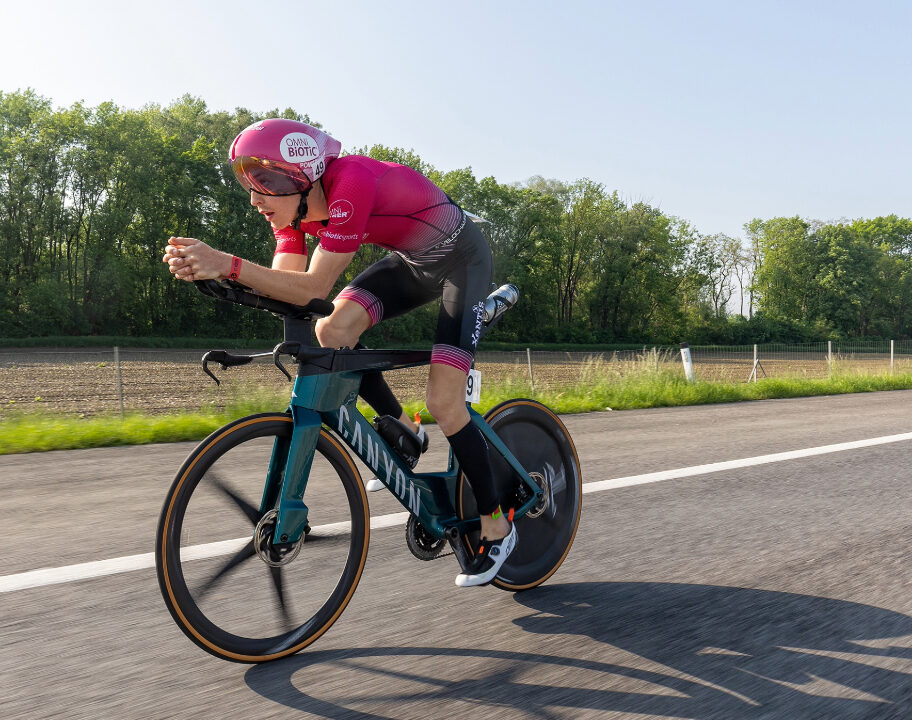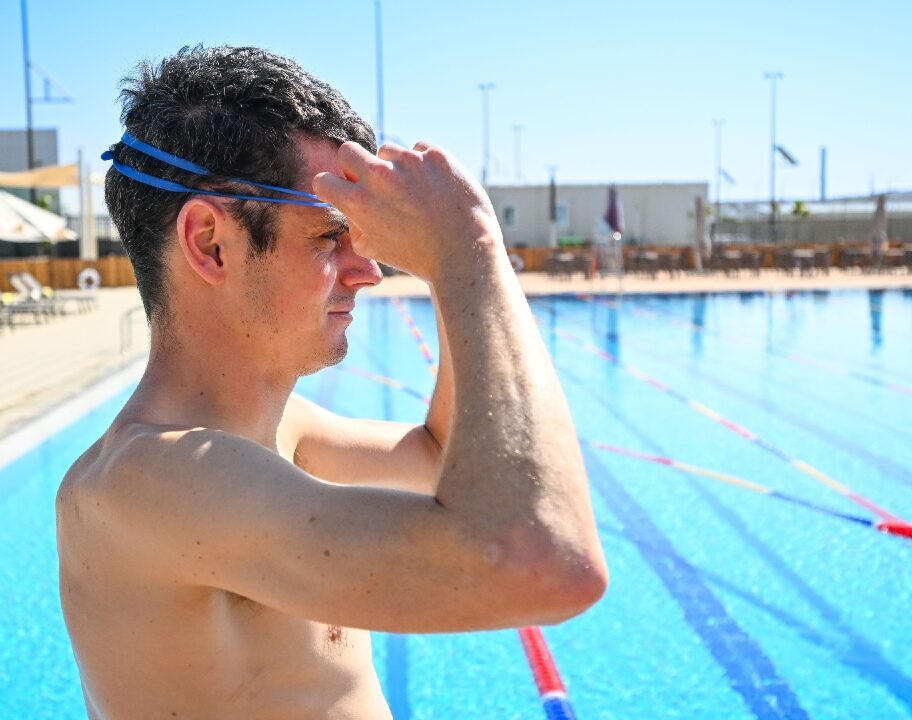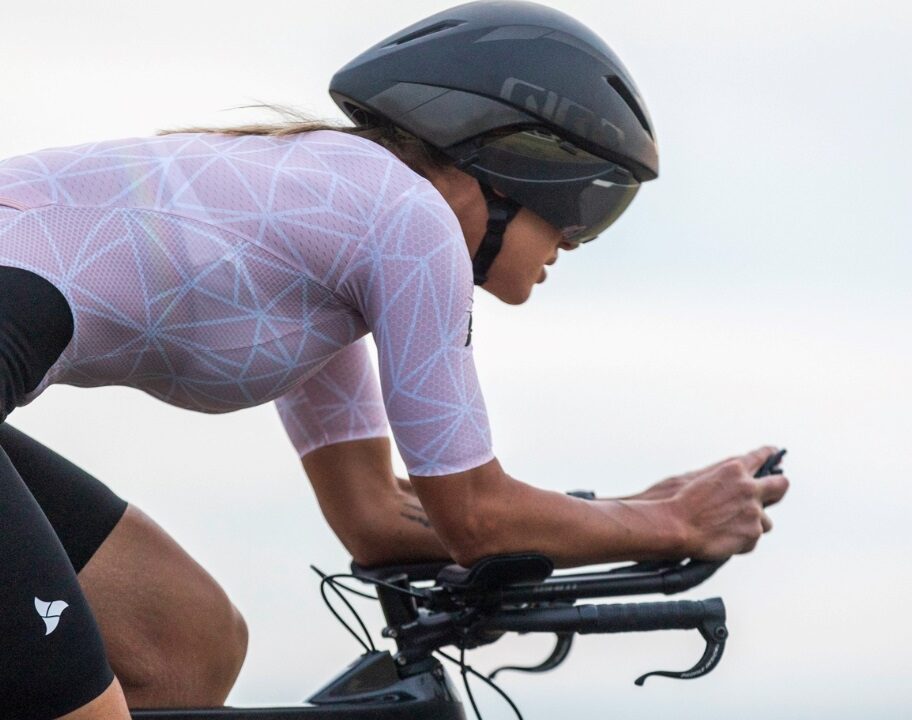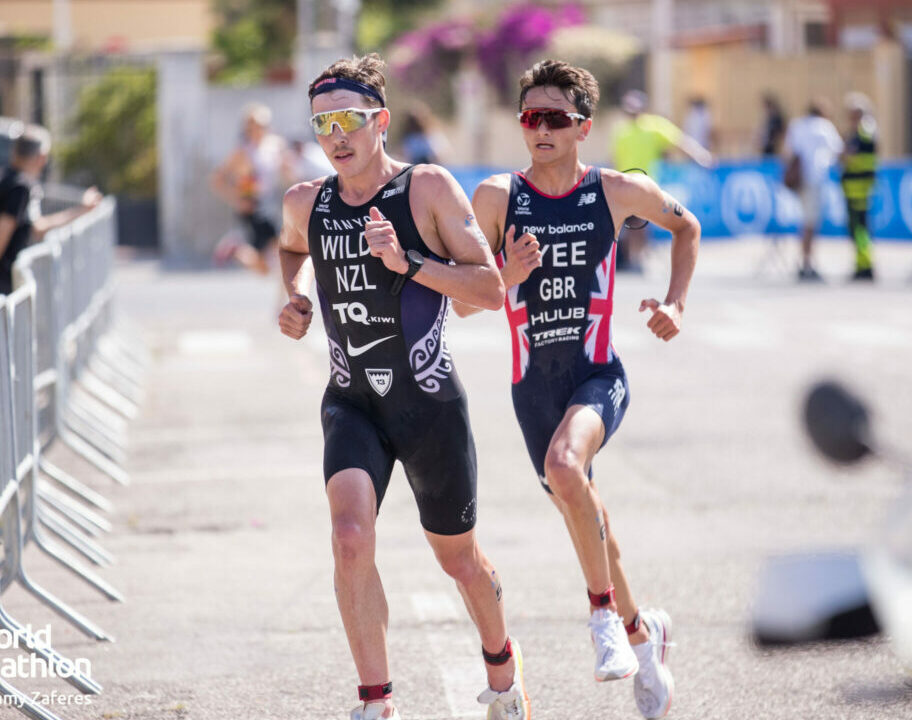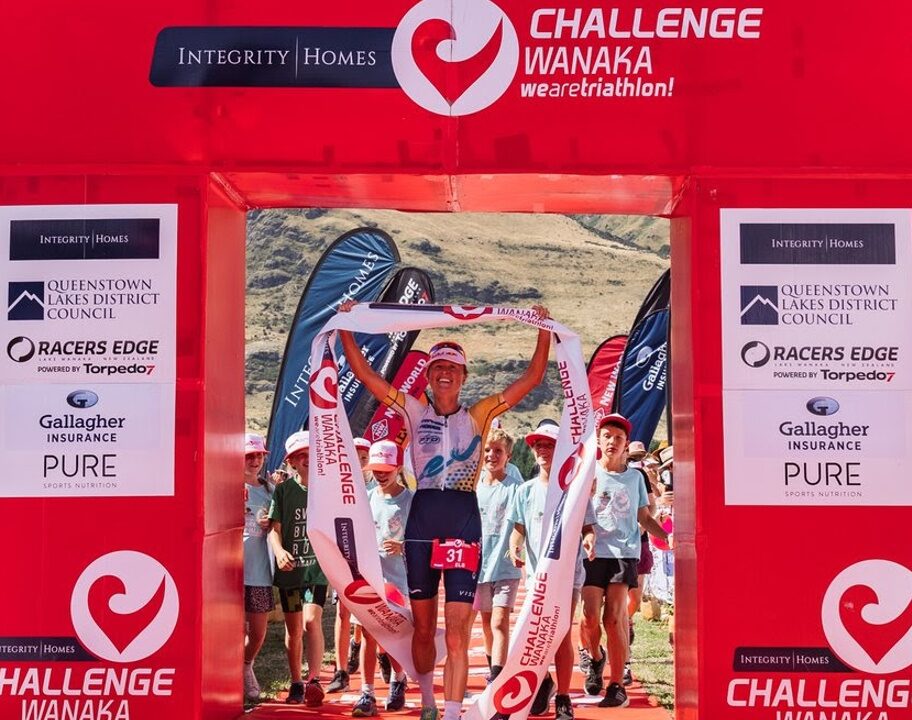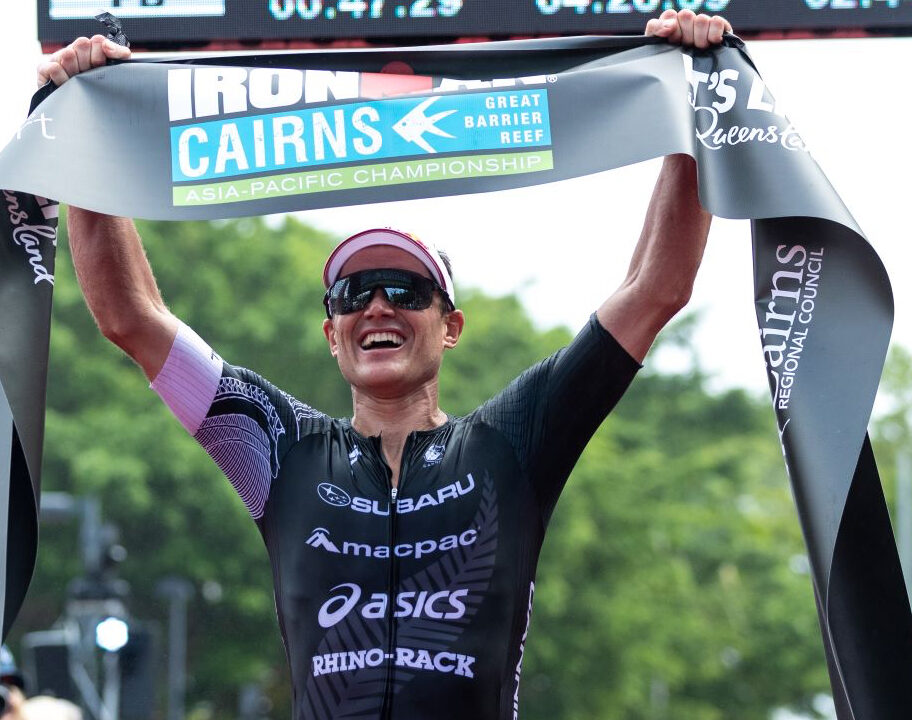Previously known as the Arena Games, supertri’s E racing format has been delivering some seriously speedy racing to our screens since its inception in 2020. The short, sharp races leave no room for error – and no time to hang around. Meaning athletes have to push themselves to the very limit of their top end pace and power to stay in contention.
We’ve seen the carnage post-race, as athletes more or less tumble off the curved treadmills, and even the very best short course PROs say time and time again that racing in the arena is ‘the hardest thing they’ve ever done.’ The indoor set-up and the innovative use of tech in supertri E, blending real life with virtual reality through Zwift, gives us unique access to athlete data that showcases just how hard they have to go.
As the excitement ramps up for this year’s supertri E World Championship in London on April 13, we’ve been talking to supertri’s stats guru Graeme Acheson to take a deep dive into previous years’ Arena Games data to find out what (or ‘watt’) it takes to compete in this format. Plus we’ve had a look at how the average age group triathlete would match up – should they dare to try and take on the pros – to get an idea of just how fast these athletes really are.
Fastest swim paces – the race to go sub-2
While the bike and the run at supertri E will take place on the virtual roads of Zwift, the swim is very much in the real world, with athletes set to dive into the iconic 50m Olympic pool at the London Aquatics Centre. And that pool format means there’s no navigational worries or congestion at the turn buoys to slow the athletes down, so the pace can really be on.
Last year in London saw Cassandre Beaugrand finally beat the swim record set by Jess Learmonth in 2020, and matched by Lucy Charles-Barclay in 2021 – clocking a wildly impressive 2 mins 10 secs for the 200m distance. “The average swim time for the women is usually around 2 mins 22 seconds,” says Graeme.
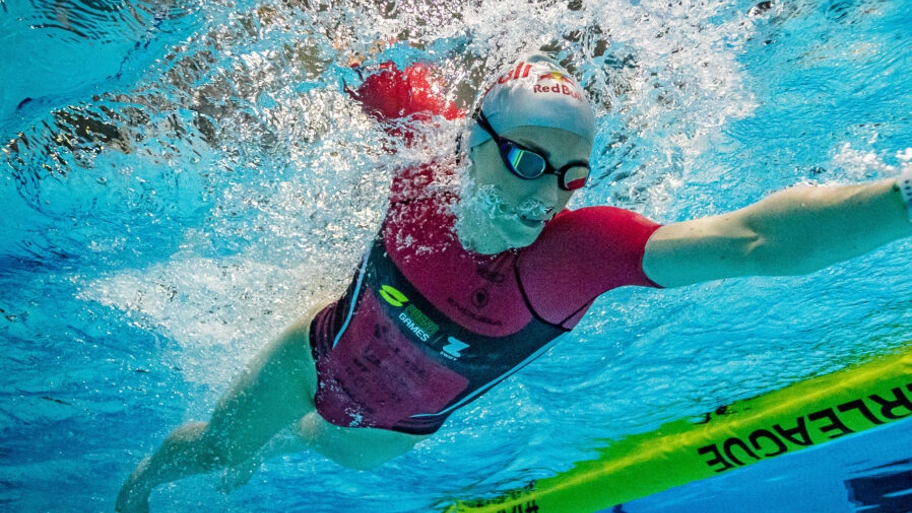
It was also a speedy swim in London for Aurelien Raphael, who set a rapid time of 2 mins 1 second in the first heat. “He finally beat out the multiple 2:02s we’ve had,” says Graeme, “but still didn’t hit the sub 2. We (I) am waiting for someone to go sub 2 in the 50m pool. Sursee was a 25m pool last year,” Graeme explains. “So the fast times we saw there aren’t comparable.”
Looking at those stats, it wouldn’t be surprising to see one of the athletes get close in London this year, though Graeme says the average male time is usually around 2:16 in a 50m pool.
Can PRO triathletes outswim a shark? The fastest supertri E swim paces in context
Those swim times sound pretty impressive. But sadly, even the world’s best aren’t quick enough to outswim a shark – with the average shark sitting at 19km/h for their swim pace. Which, if our abacus is working properly, would equate to around 18 secs per 100m. So perhaps looking at some average age group triathlon finish times might give us a more sensible point of comparison.
We’ve taken a look at the results from the 2023 World Triathlon Age Group Championships in Pontevedra. The closest distance to the short and spicy supertri E/Arena Games format was the super sprint race, with the age group athletes taking on a 300 metre swim. Taking the fastest and slowest swim times in each age group to come up with a rough average pace, the men were levelling out at 1 minute 43 seconds per 100m meaning the likes of Aurelien Raphael would be almost 1 minute 5 seconds ahead after 200 metres. And for the women, it worked out at 1 minute 50 seconds per hundred metre, so Cassandre Beaugrand would be a minute and a half up the metaphorical watery road.
Best bike power
The bike leg at supertri E might only be 4km, but we’ve seen plenty of athletes push the power to their advantage to gain a solid lead going into the run. And, in the triple mix formats where the typical swim-bike-run order is turned on its head there’s also been some pretty epic sprint finishes as the athletes battle to be first across the virtual finish line.
That power output has become even more important in the most recent years of supertri’s virtual race format, after the call was made to turn off the draft function in Zwift. That turned the racing into a true battle of the watts, rather than just who was best at drafting a wheel.
We’ve seen some incredible sprint finish power numbers of the years – Nieschlag’s almost 800w during the final at the first Arena Games in Rotterdam springs to mind. But what about the average power over the full 4km? “Generally the men average around 5 watts per kg on the bikes,” says Graeme. “Jeremy Briand set the highest power output in 2022 with a truly monstrous 6.2w/kg.” But Lionel Sanders’ performance in Montreal in 2023 saw him beat Briand’s record with a new record of 5 mins 5 secs for the 4km bike split in the final.
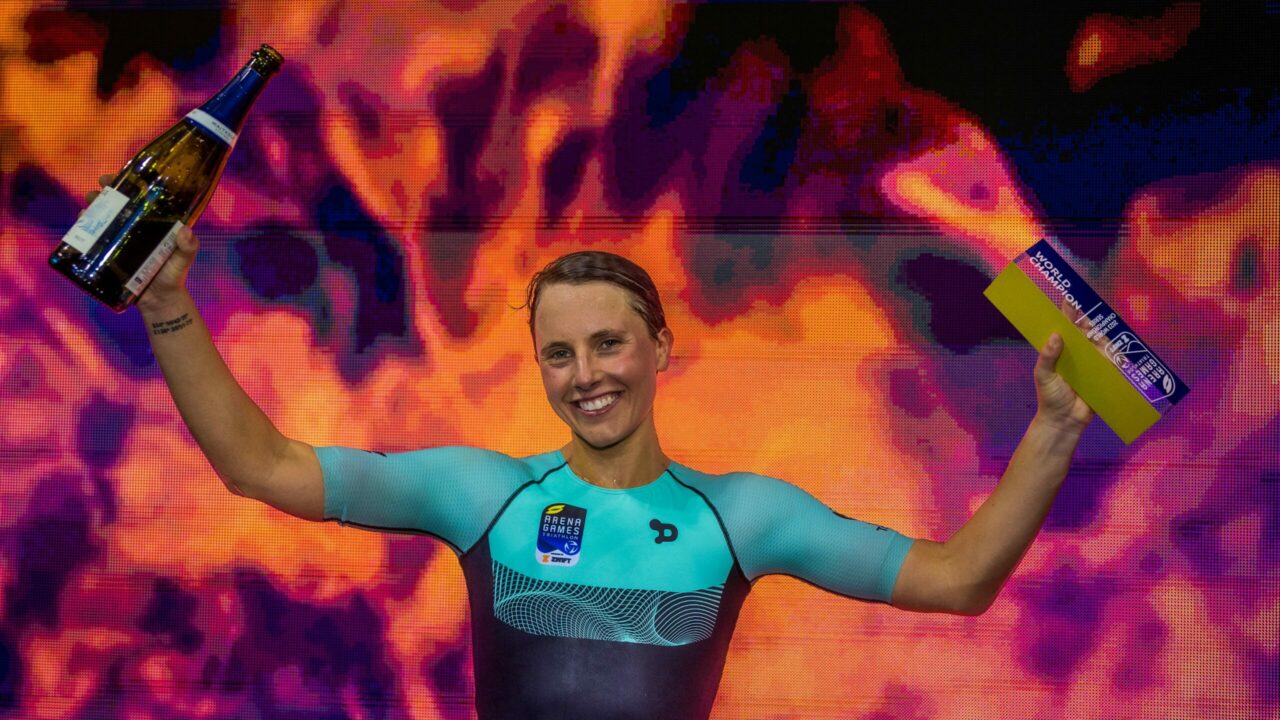
On the women’s side of things it was overall Arena Games champion Sophie Linn who was dropping the watt bombs. “Sophie Linn broke Beth Potter and Learmonth’s power record of 5.2 w/kg with a huge 5.3 w/kg in the London heats last year and a time of 5 mins 33 secs.” For context, Graeme highlights that the average power output for the women is around 4.1w/kg with a finish time of 5 mins 50s – 6 mins. Which shows just how much Linn was pushing the pace.
How do your watts compare to the PROs?
If you’ve done some riding on Zwift, or you have a power metre on your bike then you might already know your average and maximum watts per kg so comparing your numbers to the PROs is easy – if potentially a little disheartening! But if you have no idea what we’re talking about, here’s a little bit of context.
What does watts per kg mean?
In cycling, a ‘watt’ is a measurement of the power (i.e. force) that you’re pushing through the pedals. The more power you push, the faster you’ll ride. On virtual cycling platforms like Zwift, it’s this measurement of power that controls how quickly your avatar will cycle in the game.
Watts per kilogram is a metric which refers to your power output relative to your bodyweight. It’s a measure of how efficient you are at putting out power, and is a way to compare the strength and ability of cyclists of different sizes. The power to weight ratio is important because a heavier rider might naturally be able to produce more absolute power (watts) than a lighter rider. But if they are not as efficient, they won’t travel faster for that higher power output. Riders of different weights will have to push different power numbers to make forward progress at the same pace. Therefore simply comparing pure power output doesn’t give an accurate indication of difference in the riders’ fitness and strength. Using watts per kg gives a standardised point of comparison between riders of different sizes.
How to measure watts per kg
Platforms like Zwift usually tell you what watts per kg you’re pushing in real time as you ride. But you can also calculate your watts per kg by looking at your average power output over a given interval and dividing it by your bodyweight in kilograms. Typically cyclists and triathletes use the average maximum power they can sustain for an hour to calculate a watts per kg number that indicates their overall cycling fitness. But you can also look at the power you held for a 20 second sprint, for example, and perform the same equation to see how you measure up in different scenarios. The next time you sprint for a segment on Zwift – or race your riding buddy to the cafe stop – take a look at your numbers to see how you measure up against the supertri E PROs.
Most rapid run pace
Those curved treadmills we’ve become accustomed to seeing at supertri E / Arena Games might be tough going. But they’ve also facilitated some seriously rapid run paces.
So who’s topped the charts so far? Up until Montreal 2023 it was Alex Yee who held the record says Graeme, with a rapid 2 mins 34s split for the 1km run. However Jack Stanton Stock established himself as a next gen talent to watch in Montreal.
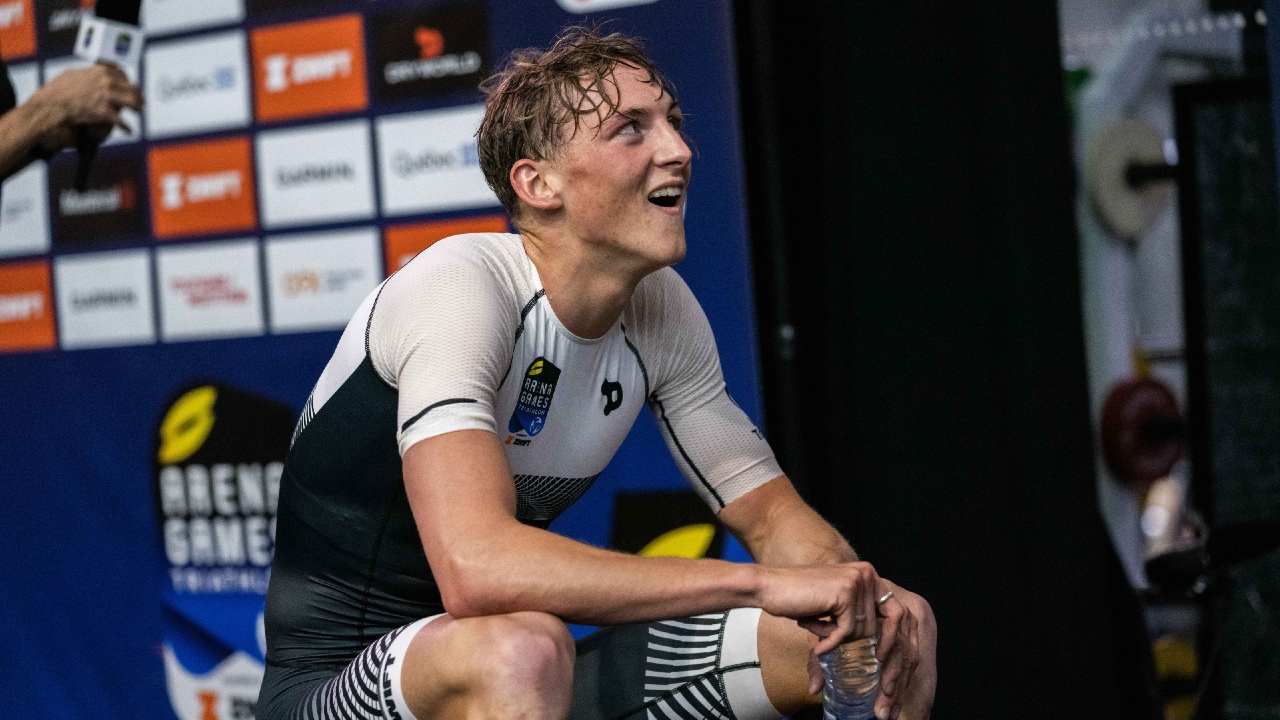
“Stanton Stock broke Yee’s record in Montreal, running a ridiculous 2:31 in the second stage of the final. This perhaps wasn’t the wisest thing however, as he fell apart later in the bike and struggled on the swim, however arguably it was a risk worth taking as he finished on the overall podium!”
For the women it was Cassandre Beaugrand, renowned for her effortless-looking but blisteringly fast run splits who recorded the fastest time with a 2 mins 50 seconds split – but Beth Potter was hot on her heels finishing just 1 second slower. “3 mins remains a big barrier for the women,” explains Graeme, “with only a few going under that time. The average time is around 3 mins 10s for the run.” With both Beaugrand and Potter set to battle it out in the 2024 event as part of their prep for Paris – keep your eyes peeled for even faster run times this year.
Pace for pace: how the PROs compare to the average age grouper
So let’s put those rapid run paces into context. Cassandre Beaugrand’s top end pace of 2:50 mins/km (4:34 mins/mile) would equate to a 14 minute 10s 5km. And while the athletes were only ever having to run 1km in one go, keep in mind Beth Potter ran 14:41 for 5km back in 2021 so it’s not too much of a stretch to compare. According to parkrun, the average finish time for the weekly timed 5km in the UK was just over 32 minutes last year.
But that’s taking into account the entire population, and parkrun’s inclusive nature means plenty of people are turning up for the social element – rather than going all out. Back to our age group finishers from Pontevedra then.
The super sprint event at the Age Group World Triathlon Championships in 2023 saw participants finish the race with a 1.6km run. For the women, the average age group pace was 4:53 mins/km (7:52 mins/miles). And looking at the men’s results the average pace was 4:31 mins/km (7:17 mins/miles). Equivalent to a 24:26 parkrun and a 22:38 parkrun respectively.
That gives you an idea of just how fast the likes of Yee, Beaugrand, Stanton Stock and Potter are, even in comparison to top level age groupers racing at world championship events.
Other cool stats: heart rate and transition times
One of the many things that makes supertri’s Esports format so engaging is being able to see the athlete’s stats on screen, in real time. This gives us an insight into who’s maxing out, who’s holding back and who might be on track for an epic blow up.
Highest heart rates
The record for the highest heart rate in an Arena Games so far sits firmly with Gordon Benson, who recorded a pulse-raising 209 bpm in London in 2020. The Netherlands’ Rani Skrabanja is close behind for the women, with a top heart rate record of 199 bpm, set in Rotterdam in 2021.
It’s also interesting to note that at Rotterdam 2021 the winner of the men’s race Marten Van Riel might have been the fastest, but he also held the lowest average heart rate – averaging just 143 bpm for the entire event according to Graeme’s stats. “Even athletes Duchampt and van der Stel who had technicals and sat out nearly a full stage had higher average HRs for the full event (156 and 152 respectively)! Van Riel maxed out at 162 which was lower than everyone else averaged in the entire event – men and women.”
Transitions rule – and Potter’s the Queen
Transitions truly are the 4th discipline in supertri E racing, says Graeme with their relative importance inflated hugely due to the shortened nature of the other disciplines. “A good swimmer, biker or runner can perhaps make up 10 seconds (at most) on the rest of the field if they really pushed hard. However, a good transition can easily gain 8 seconds, without the lung busting effort.”
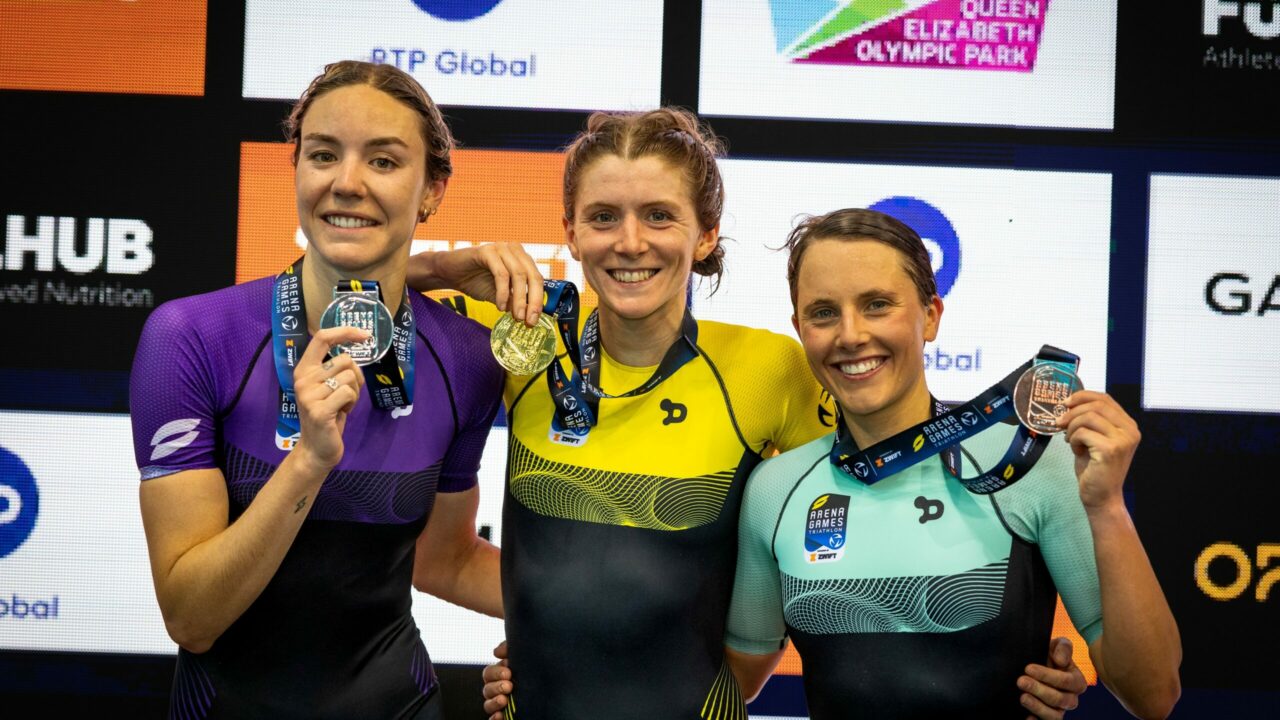
“Beth Potter is the undisputed Queen of Arena Games transition” says Graeme, with her fastest cumulative transition times 12 seconds faster than Georgia Taylor-Brown, the second fastest woman in transition. And taking into account both the men’s and women’s fields, Justus Nieschlag is the only athlete to switch between the disciplines faster than Potter with a cumulative time of 3 mins 10 seconds – almost 7 seconds faster than Alex Yee.
For us age-groupers, it’s probably worth watching the supertri E transitions closely to pick up some top time saving tips for our next races!
Record breaking paces on the cards for 2024?
When you’re watching the PROs race, it can be hard to really appreciate just how fast they’re going. They make it look easy, for the most part. But taking their stats and comparing them to what us mere mortals tend to do gives us a strong point of reference to conclude that: these elite men and women are on a whole other level.
This year’s supertri E race in London looks set to bring the fireworks, with some of the strongest contenders for the 2024 Olympics stepping into the arena at the Queen Elizabeth Olympic park to test their training so far on the road to Paris. And that means there’s a strong chance we’ll see these PROs going faster and harder than ever.

